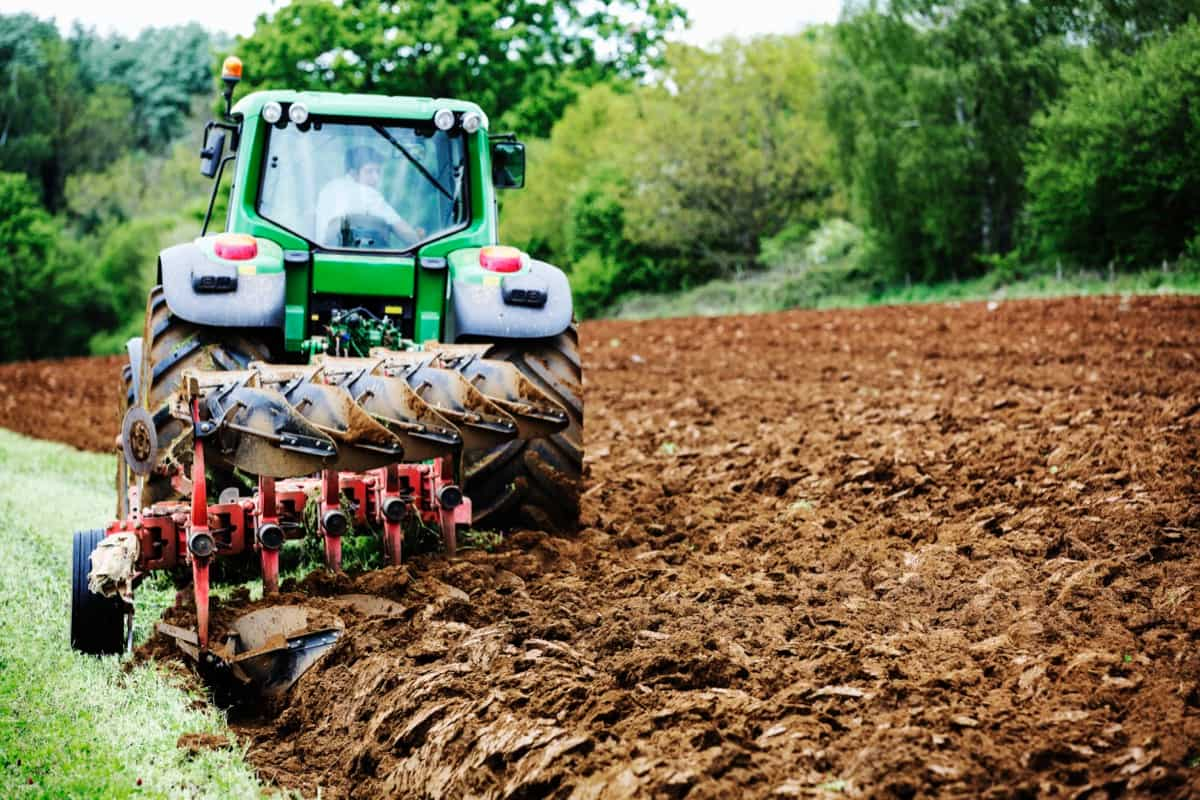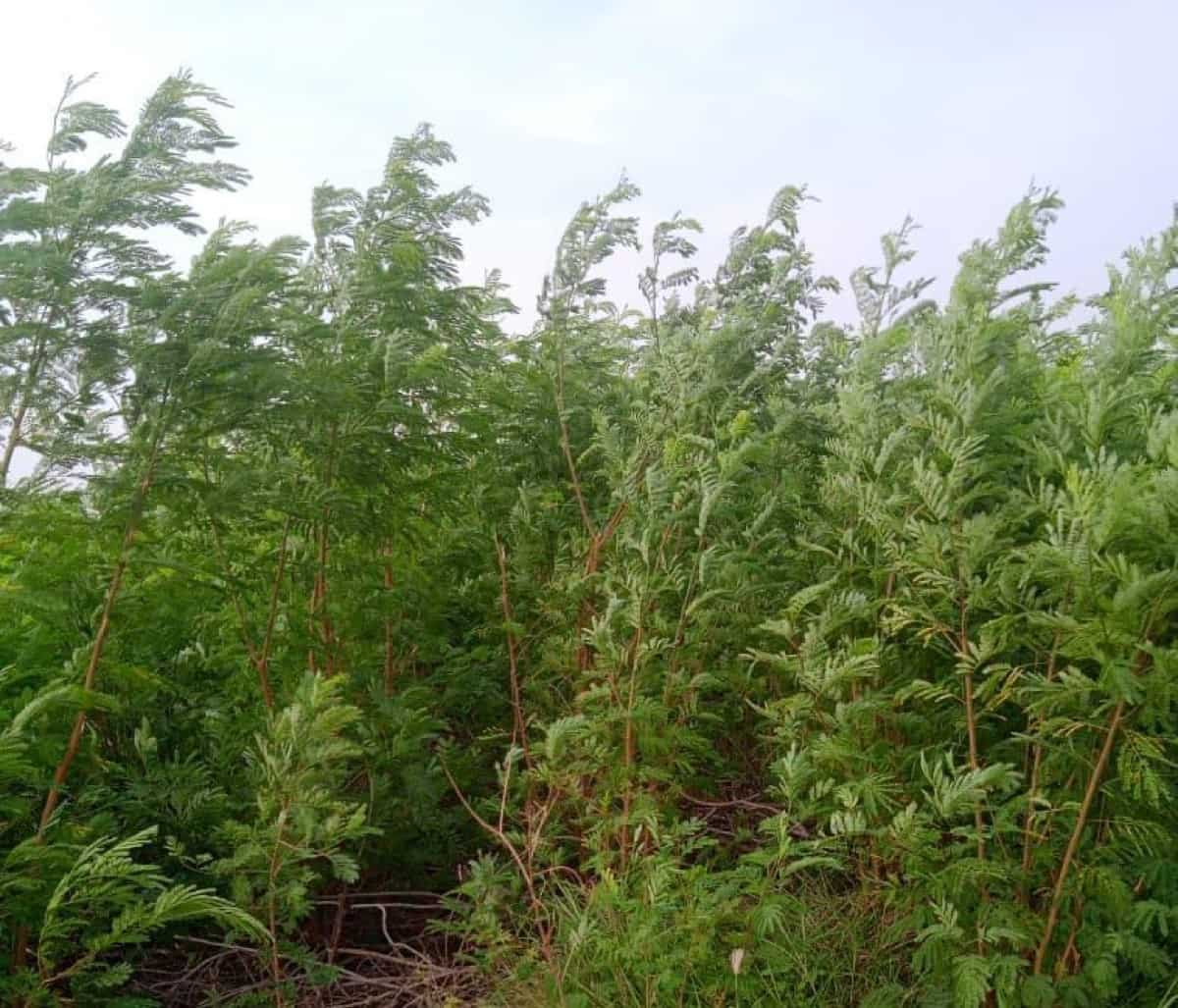For quite a while, the agronomic world has recognized the importance of tree fodder crops in the sustainability and productivity of agricultural systems. This article provides a comprehensive guide to three notable tree fodder crops: Subabul, Glyricidia, and Sesbania. Here we discuss their botanical characteristics, cultivation techniques, nutritional values, and contribution to tree fodder production systems.

Guide to Tree Fodder Crops
A Closer Look at Subabul, Glyricidia, and Sesbania
Subabul, Glyricidia, and Sesbania are prominent tree fodder crops recognized for their high nutritive value and adaptability to diverse agro-climatic conditions. Native to the American tropics, Subabul has, over time, been introduced to different parts of the world due to its fast growth, high biomass production, and ability to restore nitrogen in the soil.
Known as the “miracle tree,” it thrives in areas with average annual temperatures between 20 to 30 degrees Celsius and annual rainfall of 600 to 3000 mm. The Glyricidia, another tropical plant native to Mexico and Central America, also features notable benefits. Apart from being an excellent fodder crop, it is a green manure crop, supports soil conservation, and even acts as a windbreak.
Like Subabul, Glyricidia prefers tropical and subtropical regions with annual rainfall between 900 to 2500 mm. Sesbania, on the other hand, is native to Africa and Asia. This leguminous tree crop is renowned for its rapid growth and adaptability to various soils, including waterlogged and saline. Its preference for temperature lies between 8 to 38 degrees Celsius, with an annual rainfall requirement of 400 to 2500 mm.
The Agronomy of Subabul, Glyricidia, and Sesbania
An understanding of the agronomy of these tree fodder crops is fundamental to optimizing their cultivation and production. The agronomic practices in cultivating Subabul, Glyricidia, and Sesbania vary slightly due to their unique physiological traits, but the general procedure remains the same. It starts with land preparation involving plowing and harrowing to ensure a well-prepared seedbed. Seeds are then sown at the onset of the rainy season, as they all require a substantial amount of water for optimal growth.
It’s worth noting that all three crops need to be inoculated with the appropriate Rhizobium strain to enhance nitrogen fixation. Subabul is usually propagated through seeds and requires 2 to 3 meters of spacing between plants. In contrast, Gliricidia is propagated through stem cuttings and needs a spacing of about 2.5 meters. Sesbania, primarily propagated via seeds, needs a spacing of about 3 meters. All these crops require regular weeding, especially in the early stages of growth.
Nutritional Composition and Value of Subabul, Glyricidia, and Sesbania
In tree fodder production, a crop’s nutritional value is paramount. It determines the suitability of the crop for various livestock and significantly influences the overall health and productivity of the animals. Subabul, Glyricidia, and Sesbania are acclaimed for their high protein content, which ranges between 20 to 30%, making them excellent protein supplements for livestock.
In case you missed it: Ultimate Guide to Grass Fodder Crops: Hybrid Napier, Guinea Grass, Para Grass, and Blue Buffel Grass

They also contain substantial amounts of essential minerals like calcium and phosphorus, vital for animal growth and development. Nevertheless, it’s crucial to note that Subabul contains mimosine, a toxic amino acid that can negatively impact non-ruminant animals. As a result, Subabul is more suited for ruminants that can detoxify mimosine in their digestive system. Glyricidia and Sesbania, in contrast, don’t have such toxicity issues.
The Role of Subabul, Glyricidia, and Sesbania in Sustainable Tree Fodder Production
Subabul, Glyricidia, and Sesbania play transformative roles in sustainable tree fodder production. Their fast growth and high biomass production make them an excellent choice for intensive fodder production systems. They can be grown in diverse agro-climatic conditions and on marginal lands unsuitable for conventional crops, offering a practical solution to the scarcity of fodder, especially in dry seasons.
Their ability to fix nitrogen improves their own growth and enriches the soil, enhancing the productivity of other crops grown in the vicinity. This is particularly beneficial in agroforestry systems where these crops are intercropped with food crops or grown alongside pasture lands. In addition, these crops serve as effective soil conservation agents, preventing soil erosion and promoting soil health.
Moreover, these tree fodder crops offer environmental benefits. They sequester significant amounts of carbon, contributing to climate change mitigation efforts. Their deep root systems improve soil structure, increase water retention, and enhance soil infiltration capacity, helping maintain the hydrological balance in ecosystems.
Fodder Management and Utilization
When it comes to the practical utilization of Subabul, Glyricidia, and Sesbania as tree fodder crops, there’s much more to consider beyond just their cultivation. The management and utilization of these crops are key factors in deriving the maximum benefits from their cultivation. It is important to gather the tree fodder crops at the appropriate moment in order to guarantee their optimal nutritional content. For instance, Subabul should ideally be harvested before it flowers, usually around three to four months after planting.
This is when its protein content is at its peak, and the presence of mimosine is at its lowest. Glyricidia should be harvested before the onset of the dry season, while Sesbania should be cut back before it starts flowering, usually 60-90 days after sowing. The harvested fodder can be used immediately or preserved for future use. The latter involves drying and storing the leaves in a cool, dry place. It’s also possible to make silage or hay from these crops, though the process requires careful management to prevent spoilage.
In terms of feeding the fodder to livestock, the animals’ specific nutritional needs and physiological characteristics must be taken into account. For instance, while Subabul is ideal for ruminants, care should be taken to avoid feeding it to non-ruminant animals because of the presence of mimosine. Glyricidia, with its high tannin content, should be mixed with other fodder crops to inhibit protein absorption.
The highly palatable Sesbania is an excellent option for various animals, including ruminants, poultry, and rabbits. As a best practice, gradually introducing these fodders into the animals’ diets and observing their reactions is important. It’s always advisable to consult with a livestock nutritionist or a veterinarian when changing or adjusting livestock feed to ensure the health and productivity of the animals.
In case you missed it: Ultimate Guide to Azolla Fodder/Feed: As Livestock Feed and Production

Conclusion
Subabul, Glyricidia, and Sesbania are more than just tree fodder crops. They are crucial in sustainable agricultural systems, providing high-quality fodder, enhancing soil health, conserving the environment, and boosting agronomic productivity.
- Feed Your Flock for Less: Top 10 Tips to Save on Chicken Feed
- Ultimate Guide to Ossabaw Island Hog: Breeding, Raising, Diet, and Care
- Hatching Answers: The Top 10 Reasons Your Chickens Aren’t Laying Eggs
- Eggs and Economics: Breaking Down the Cost of Raising Backyard Chickens
- Defend Your Greens: Proven Methods to Keep Iguanas Out of Your Garden
- Ultimate Guide to Cinnamon Queen Chicken: A Comprehensive Guide for Beginners
- Ultimate Guide to California Tan Chicken: Breeding, Raising, Diet, Egg-Production and Care
- Ultimate Guide to Marsh Daisy Chicken: Breeding, Raising, Diet, and Care
- 10 Types of Chicken Farming Businesses You Can Start for Profits